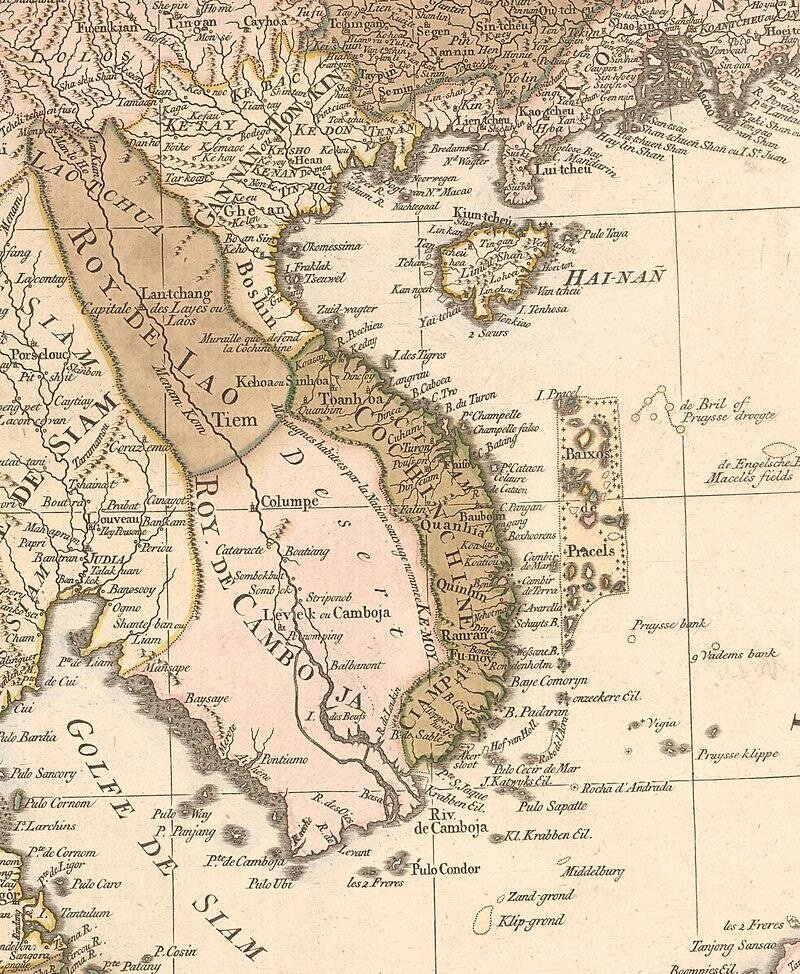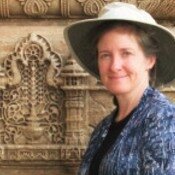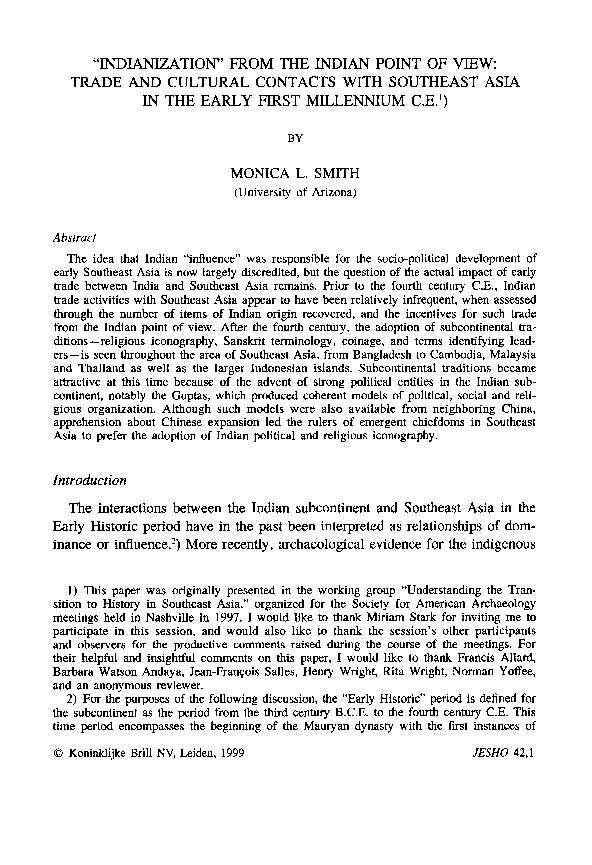"Indianization" from the Indian Point of View: Trade and Cultural Contacts with Southeast Asia in the Early First Millennium C.E
by Monica L. Smith
Did Western scholars overestimate the scope of "Indian influence" on Southeast Asia?

Publication: Journal of the Economic and Social History of the Orient, Vol. 42, No. 1 pp. 1-26 | via BRILL and jstor.org
Published: 1999
Author: Monica L. Smith
Pages: 26
Language : English
pdf 5.4 MB
This useful contribution to the ongoing debate over the extent of “Indian influence” in Southeast Asia enlights two somewhat controversial aspects:
- A Western bias? “Prior to the fourth century C.E., contacts between regions of the eastern Indian Ocean were sporadic and limited to economic interactions, as evidenced by the recovery of a limited array of items having an Indian provenance. Only after the fourth century C.E., concurrent with a number of political and cultural changes in the subcontinent, did growing Southeast Asian political entities widely adopt a common script, iconography and set of political terms derived from Indian models. One reason for the previously-held interpretations of Indian “influence” on the development of socio-political complexity in Southeast Asia lies in the historical trajectory of Western scholarship of the Indian Ocean. By 1900, the tradition of European scholarly inquiry in India was already more than a century old, whereas very little was known about the indigenous structure of early Southeast Asian societies. As archaeological investigations began in these areas, items of “Indian” affinity were easily recognized, and the presence of these items led to interpretations that credited the development of social complexity to the domination or influence of the subcontinent. As archaeological work has proceeded in Southeast Asia, it is increasingly apparent that these regions sustained a long period of indigenous development. Investigations in the past thirty years indicate that rather than a process of cultural colonization,“Indian influences were selectively assimilated into a pre-existing, well-developed cultural base.”
- China and India, two formidable neighbors: “The example of the Lin‑i illustrates that while Chinese models of social,political and religious organization were available to local leaders, their adoption would have been tempered by the apprehension that such adoption implied, or invited, Chinese control. By contrast, Indian political entities were too weak for physical expansion, and in being distant provided attractive, neutral and easily-manipulable symbols for local authorities. Presented with two models of state-operation, the Chinese and the “Indian,” indigenous leaders in Southeast Asia chose to incorporate a model of bureaucratic organization that encompassed little threat of political intervention. (…) The simultaneous adoption of traditions from the subcontinent throughout Southeast Asia varied in response to local needs and circumstances. In regions close to the Gupta realm, such as the areas of modern Bangladesh, the adoption of subcontinental religious icons and languages may have been a demonstration of local leaders’ acceptance of their role as a frontier zone or ally of the expanding Gupta polity. In the intervening regions of Myanmar and northeastern India, as well as in island Southeast Asia, the adoption of subcontinental traditions may have been undertaken by local leaders desiring to impress and govern their populations by reference to powerful but distant outside authorities. And in many parts of mainland Southeast Asia, the adoption of such traditions may have included the additional motivation to maintain cultural autonomy as a reaction to the spectre of Chinese expansion.”
Note: SInce its publication in 1999, new historical data and research have brought some correctives to this paper (see related entries on Indian influences, especially in mainland Southeast Asia).
Tags: Indianization, Indian traders, Bay of Bengal, Guptas, Indian influences, Chinese influences, Linyi, Southeast Asia
About the Author

Monica L. Smith
Monica Smith is an archaeologist with the Faculty of Anthropology, University of California Los Angeles (UCLA), USA, whose principal research interests are the human interaction with material culture, urbanism as a long-term human phenomenon, and the development of social complexity.
Her current research project is at the ancient city of Sisupalgarh in eastern India, in collaboration with Dr. R.K. Mohanty of Pune’s Deccan College. She also maintains long-term research interests in the American Southwest, particularly on the historic period.

